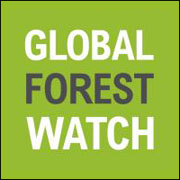
The World Resources Institute on Thursday launched Global Forest Watch, a dynamic online forest monitoring and alert system to help fight the massive deforestation of the planet.

GFW will let governments monitor where forest clearing is occurring in near-real-time and track illegal forest logging almost immediately. Local farmers can upload calls to action from mobile phones if their communities are endangered.
GFW will use Google Earth Engine and Google Maps Engine to map the planet’s forests with satellite imagery and make the information freely available over the Internet.
In addition, consumers can create their own forest maps.
About Global Forest Watch
“We have had an extremely enthusiastic response to Global Forest Watch , and we are already working closely with many parties — such as the government of Indonesia and companies like Unilever and Nestle — to use the data,” James Anderson, forests communications officer at WRI, told TechNewsWorld.
“Roughly half of the funding for GFW will be used to fund on-the-ground uses and applications for the data,” he said.
The WRI has “an extensive outreach campaign” and considers public education “a key step,” Anderson added.
It is partnering with more than 40 organizations with “very broad reach,” such as the United Nations Environment Program, the Jane Goodall Institute and Google.
The Word for ‘World’ Is ‘Forest’
Forests have been described as the lungs of the planet, as plants take in carbon dioxide and give off oxygen. They also release water vapor, contributing to the water cycle. Deforestation is considered one of the contributing factors to global climate change.
Betwen 2000 and 2012, planet Earth lost 2.3 million square km of tree cover, while a mere 0.8 million square km had regrown or been replanted or restored, found researchers from the University of Maryland and Google, who collaborated on building the first detailed maps of the world’s forests.
GFW hosts the data from this project on its platform and combines it with data on land use, concessions for extractive industries, and protected areas. It partners with the University of Maryland and Google to analyze, visualize, host and otherwise work with the data.
The Impact of Deforestation
Agriculture and development — the building of roads and housing — have been the major causes of deforestation.
Deforestation turns fertile soil into dust bowls as tree roots hold soil together, and when an area is deforested, the free topsoil is blown away by winds. That makes the area unfit for agriculture.
Cutting down forests can result in the slaughter or eradication of entire species. For example, expansion of oil palm and pulpwood plantations in Indonesia destroyed nearly two-thirds of the habitat of tigers from 2009 to 2011, leading to more poaching of the animals and more tiger attacks, Greenpeace reported.
Oil palm planters are believed to have poisoned 14 pygmy elephants in Borneo — approximately 1 percent of the entire population of this animal.
How GFW May Help
“By making the information publicly available, we are … increasing accountability,” WRI’s Anderson said. “If companies or governments fail to conserve forests, there will be very clear evidence of where and when the forest loss occurred.”
Large companies like Unilever, Nestle and Wilmar are making commitments to deforestation-free supply chains because of pressure from buyers and investors, Anderson said.
“The hardest part is to get people and companies to change their behavior,” Jim McGregor, founder and principal analyst at Tirias Research, told TechNewsWorld.
“It’ll take a global consciousness — or, more likely, pain in the form of higher electricity and other bills — to change things,” he said, “but I fear by the time we get there, it’ll be too late.”






















































